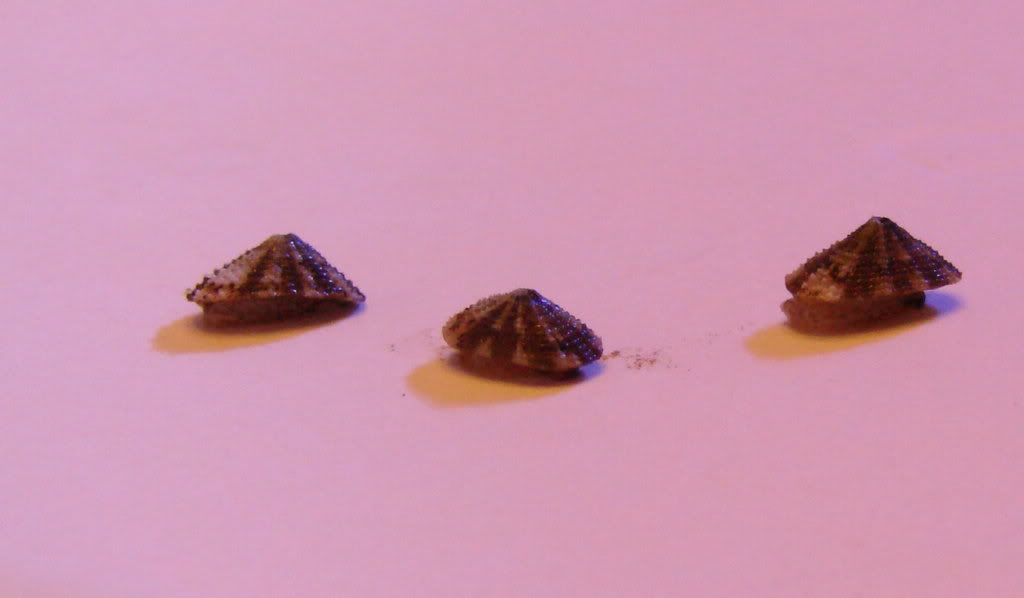The Keyhole Limpets are typically half an inch long, or smaller, and feed on unwanted hydroids and filamentous algae, cyanobacteria, diatoms. Unfortunately, in a SPS tank , they will also feed on the tissue of SPS corals.Limpets have an oval, laterally compressed shell that tapers to an off-centered blunt point. Limpets have a tiny hole at the crest of their shell where it becomes a point, which they use for waste and water exchange by taking the water from under their shell and releasing it threw the top of the shell.
They are a common import with live rock, and are typically colored in a mottled brown, black and tan pattern, and do not have a mantle that cover their shell.They normally are thin and streamline so they won't get crushed by big waves on the reefs. Some limpet species are herbivores and are beneficial to even a reef tank, but even the herbivores can be harmful if there is not enough food for them. Limpets will typically not reproduce to any significant number in the aquarium, and physical removal will usually be sufficient to control them.







